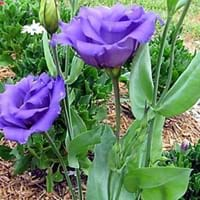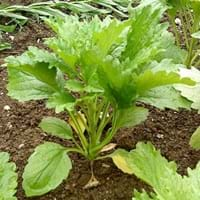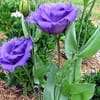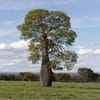Life Span
Biennial
Annual
Type
Herbs
Flowering Plants
Origin
Southwestern United States, Mexico
China
Types
Not Available
Ribbon series, Milady aster
Habitat
gardens, Grassland, River side
Cold Regions
USDA Hardiness Zone
Not Available
3-9
AHS Heat Zone
12 - 1
9 - 1
Sunset Zone
21,22
1a, 1b, 2a, 2b, 3a, 3b, 4, 5, 6, 7, 8, 9, 10, 11, 12, 13, 14, 15, 16, 17, 18, 19, 20, 21, 22, 23, 24
Habit
Upright/Erect
Upright/Erect
Flower Color
Blue, Lavender, Blue Violet
White, Yellow, Purple, Pink, Rose, Crimson, Blue Violet
Flower Color Modifier
Bicolor
Bicolor
Fruit Color
Non Fruiting Plant
Not Available
Leaf Color in Spring
Gray Green
Green
Leaf Color in Summer
Gray Green
Green
Leaf Color in Fall
Gray Green
Green
Leaf Color in Winter
Light Green
Light Green
Leaf Shape
Oval
Arrowhead
Plant Season
Spring, Summer
Spring, Summer, Fall
Sunlight
Full Sun, Partial Sun
Full Sun, Partial shade
Type of Soil
Clay, Loam, Sand
Loam, Sand
The pH of Soil
Neutral, Alkaline
Acidic, Neutral
Soil Drainage
Well drained
Well drained
Bloom Time
Spring, Late Spring, Early Summer, Summer, Late Summer
Early Summer, Summer, Late Summer, Early Fall, Fall, Late Fall
Tolerances
Not Available
Drought
Where to Plant?
Container, Ground, Pot
Container, Ground
How to Plant?
Seedlings, Stem Planting
Seedlings
Plant Maintenance
Medium
Medium
Watering Requirements
Keep the ground moist but not water-logged, Requires watering in the growing season, Water more in summer
Do Not over Water, Keep ground moist, Never Over-water, Requires a lot of watering, Requires regular watering
In Summer
Lots of watering
Lots of watering
In Spring
Moderate
Moderate
In Winter
Average Water
Alternate Days
Soil pH
Alkaline, Neutral
Slightly Acidic
Soil Type
Clay, Loam, Sandy
Loamy, Well drained
Soil Drainage Capacity
Well drained
Loamy, Well drained
Sun Exposure
Full Sun, Partial Sun
Full Sun
Pruning
Remove damaged leaves, Remove dead branches, Remove dead leaves
Cut or pinch the stems, Remove damaged leaves, Remove dead branches, Remove dead leaves
Fertilizers
All-Purpose Liquid Fertilizer
Compost, Well-rotted manure
Pests and Diseases
Red blotch
fungus
Plant Tolerance
Drought
Drought
Flower Petal Number
Single
Single, Double, Semi-Double
Foliage Texture
Medium
Medium
Foliage Sheen
Matte
Matte
Attracts
Bees, Butterflies
Not Available
Allergy
no allergic reactions
Asthma
Aesthetic Uses
Beautification, Bouquets
Beautification, Bouquets, Hanging Basket, Landscape Designing, Showy Purposes
Beauty Benefits
Not Available
Not Available
Environmental Uses
Air purification
Air purification, Food for insects, Versatility, Very little waste
Medicinal Uses
No Medicinal Use
Rheumatism
Part of Plant Used
Flowers
Flowers
Other Uses
Showy Purposes, Used as Ornamental plant
Decoration Purposes, Employed in herbal medicine, Showy Purposes, Used as Ornamental plant
Used As Indoor Plant
Sometimes
Yes
Used As Outdoor Plant
Yes
Yes
Garden Design
Cutflower, Edging, Feature Plant, Foundation
Bedding Plant, Container, Cottage garden, Rock Garden, Showy Tree
Botanical Name
EUSTOMA grandiflorum 'Florida Blue'
CALLISTEPHUS chinensis
Common Name
Florida Blue Lisianthus, Lisianthus
China Aster
In Hindi
फ्लोरिडा Lisianthus
चीन एस्टर
In German
Florida Lisianthus
China Aster
In French
Floride Lisianthus
Chine Aster
In Spanish
lisianthus Florida
aster de China
In Greek
Φλόριντα lisianthus
Κίνα Aster
In Portuguese
Florida Lisianthus
China Aster
In Polish
Florida Eustoma
Chiny Aster
In Latin
Florida Lisianthus
Sinis Aster
Phylum
Not Available
Magnoliophyta
Class
Not Available
Magnoliopsida
Order
Gentianales
Asterales
Family
Gentianaceae
Asteraceae
Genus
Eustoma
Callistephus
Clade
Angiosperms, Asterids, Eudicots
Angiosperms, Asterids, Eudicots
Tribe
Not Available
Astereae
Subfamily
Paperveroideae
Asteroideae
Number of Species
Not Available
Season and Care of Florida Lisianthus and China Aster
Season and care of Florida Lisianthus and China Aster is important to know. While considering everything about Florida Lisianthus and China Aster Care, growing season is an essential factor. Florida Lisianthus season is Spring and Summer and China Aster season is Spring and Summer. The type of soil for Florida Lisianthus is Clay, Loam, Sand and for China Aster is Loam, Sand while the PH of soil for Florida Lisianthus is Neutral, Alkaline and for China Aster is Acidic, Neutral.
Florida Lisianthus and China Aster Physical Information
Florida Lisianthus and China Aster physical information is very important for comparison. Florida Lisianthus height is 25.40 cm and width 25.40 cm whereas China Aster height is 20.30 cm and width 25.40 cm. The color specification of Florida Lisianthus and China Aster are as follows:
Florida Lisianthus flower color: Blue, Lavender and Blue Violet
Florida Lisianthus leaf color: Gray Green
China Aster flower color: White, Yellow, Purple, Pink, Rose, Crimson and Blue Violet
- China Aster leaf color: Green
Care of Florida Lisianthus and China Aster
Care of Florida Lisianthus and China Aster include pruning, fertilizers, watering etc. Florida Lisianthus pruning is done Remove damaged leaves, Remove dead branches and Remove dead leaves and China Aster pruning is done Cut or pinch the stems, Remove damaged leaves, Remove dead branches and Remove dead leaves. In summer Florida Lisianthus needs Lots of watering and in winter, it needs Average Water. Whereas, in summer China Aster needs Lots of watering and in winter, it needs Alternate Days.





